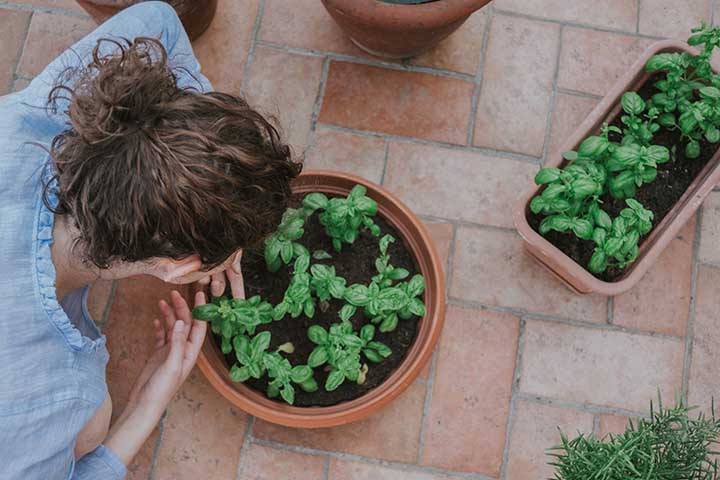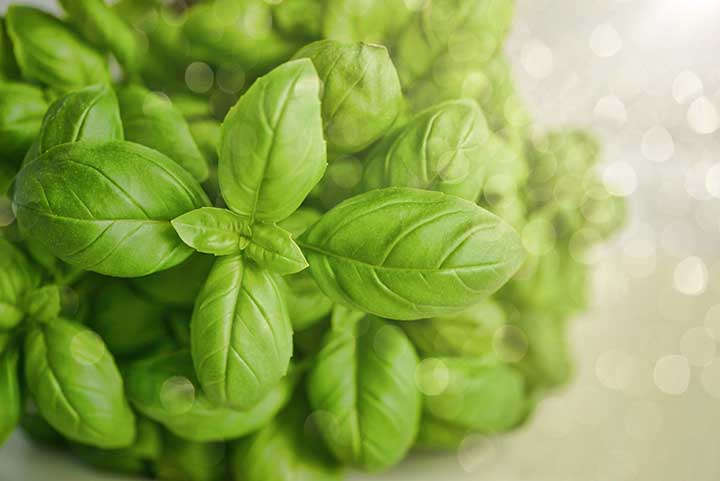Do you have extra basil in your hydroponic growing system, or are wandering in general about starting basil plants hydroponically and then transplanting them into soil? If so, keep reading!
Can you plant hydroponic basil in soil?
If done with care, you can remove healthy hydroponic basil from your growing system and plant it in the soil. The difference between growing mediums is quite massive though, and your plant’s roots will notice it immediately. To make the transition successful, water the soil daily for a week or two.
Below, we discuss everything you need to know to make the hydroponics-to-soil transition successful with your basil!
Table of Contents
When Should We Transfer for the Best Result?
A general rule of transplanting hydroponic plants is to wait until the plant is a few inches tall, or has at least two or three sets of true leaves fully developed. This rule applies whether it is to the soil or to another hydroponic growing system, that you plan on transferring to.
What Do We Prepare Before the Transfer?
Once your hydroponic basil is almost ready for transferring (it has one or more sets of true leaves or is at least two inches tall already) there are a few things you need to prepare:
- Procure a proper pot, or secure a place in the garden, for your plants.
- If planting in a pot, prepare a rich potting soil mix for your basil.
- Whether planting in pots, or in the ground, prepare some sort of fertilizer for your plants.
Depending on how many plants you are planning on transferring, this step could take 5 minutes or several hours!
How Do You Transplant Basil From Water to Soil?

Transplanting hydroponic basil from the water to the soil is a relatively straightforward process:
1. Remove the Hydroponic Basil from the Hydroponic System
The first step in successfully planting hydroponic basil into the soil is removing the grow site/netted pot holding your hydroponic basil from your growing system.
Most of the time this step is as easy as popping the netted pot out of its place with your fingers.
2. Loosen the Hydroponic Growing Medium
Carefully loosen the growing medium currently housing the hydroponic basil.
Gently and slowly squeeze the sides of the netted pot from side to side, and then use your fingers or a garden knife to work the growing medium away from the base of the hydroponic basil.
3. Trim Overgrown Roots Sticking Out of the Netted Pot
Trim excessive and unhealthy roots from the bottom of the hydroponic basil’s current container before moving on to the next step.
More or less, if the roots are yellow, brown, black, slimy, or smelly, they need removing.
Otherwise, only trim them off if they are more than 3 inches long sticking out of the bottom of the netted pot.
4. Pull the Basil Out of the Hydroponic Growing Medium
When the roots are trimmed to your liking, and the hydroponic growing medium is loosened up a bit, it’s time to pull the plant out.
To do so, place a finger and thumb over the base of the hydroponic basil’s stem, and gently tug it up and out of the container.
5. Stick the Basil in the Soil Growing Medium
Once you’ve pulled the basil from its hydroponic medium, it’s time to stick it into its new home.
Carefully place the hydroponic basil, root first, into the new soil-based medium and add a bit of soil.
6. Set the Roots and Backfill the Hole with Soil
When you have your hydroponic basil in its new container, or a hole in the ground, with a bit of soil over its roots, you need to “set” the roots in the new medium.
Press down firmly and set the roots into the place where you want them before continuing to add more soil.
How to Take Care of Basil after the Transfer?
Hydroponic basil requires anywhere from a week or two up to a full month or so to fully recover from being planted in the soil.
Be sure to practice proper aftercare the first several days after the transfer, because you must water the basil every day (possibly several times per day).
The main reason hydroponic basil transplants (in the dirt) fail is that their soil dried out too much before the water roots died and the soil root system established itself.
Aside from keeping the basil extremely well watered, you need to keep it well-drained and receive plenty of light as well.
Another word of advice for planting hydroponic basil in the soil is not to apply fertilizer until the plant has transitioned from one growing medium to another.
Otherwise, the plant may focus on absorbing the extra nutrients instead of establishing a new soil-based root system in place of the old dying water roots.
How Do We Know If The Transfer is Fail or Success?
In most cases, you’ll know if your hydroponic basil transfer into the soil was successful or not within one to two weeks, when the plant begins to really perk up and possibly produce new growth as well.
That said, if the transfer was a failure, you may see the signs within hours or days. If your plant turns yellow or brown, it is dying, not transitioning.
Failed transfers from hydroponics to soil are typically caused by soil that is too dry. For that reason, make sure to water your freshly transplanted hydroponic basil plants every single day for the first week or two.
Common Problems When Transfer Basil from Hydroponic to Soil
So long as you follow the steps/advice outlined in the sections above, you’ll have no problem transferring basil from a hydroponic growing system to soil.
For those who skimmed over the above sections, here’s a recap of the most common problems with transplanting basil plants from hydroponic systems into the soil:
1. Rotten or Overgrown Roots
One of the biggest common problems with transplanting hydroponic into the soil is failing to trim the roots beforehand. Hydroponic roots are prone to root rot, which makes it almost impossible for the plant to produce a healthy new soil root system.
Solution(s)
Always check hydroponic roots and trim off yellow, brown, black, and slimy or smelly areas before planting them in soil.
2. Growing Medium Drying Out
Another extremely common reason hydroponic basil dies rather than transfers into the soil properly is that the soil keeps drying out. Until the plant’s water roots are dead and gone, replaced with soil roots, the growing medium must remain thoroughly soaked.
Solution(s)
Water your newly planted basil plants daily, even 3, 4, or 5 times if necessary depending on the growing medium, temperature, light exposure, and other factors.
3. Growing Medium Not Draining Properly
A sure way to kill your hydroponic basil transplants is by watering them adequately during the first several days they are in the soil… but failing to drain things properly. In these cases, the water roots try to keep growing, rather than dying off and giving birth to proper soil roots.
Solution(s)
Properly cultivate the ground before planting, or plant your hydroponic basil transfers into containers with drainage holes in the bottom.
4. Too Much Fertilizer (or Too Soon)
Plants need to struggle a little bit when they are transplanted into a new environment. If they don’t, they won’t begin to adjust to and overcome the situation. Applying fertilizer to freshly planted hydroponic plants is a big no-no because it tricks the plant into thinking it doesn’t need new roots.
Solution(s)
Do not add fertilizer (or plant food of any type) to your hydroponic transplants for at least 2 to 3 weeks if not a full month after planting in soil.
